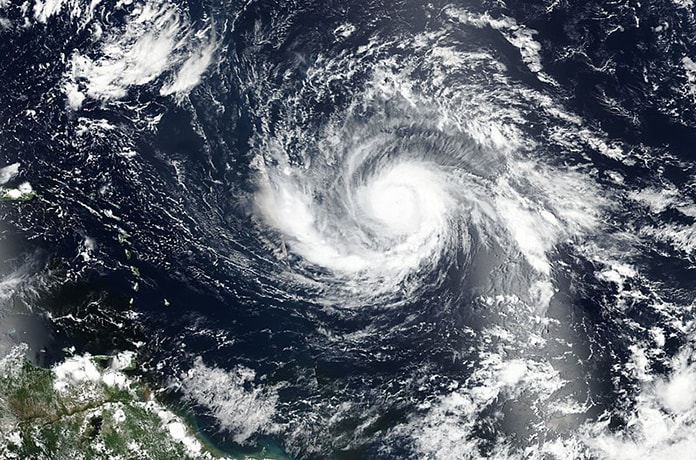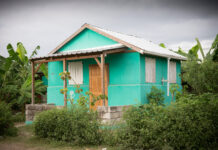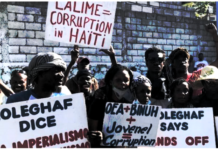Online, television, radio and print news services are awash with reports of Hurricane Harvey and Irma’s devastating effects in Texas, Florida and neighboring southeastern U.S. states, and justifiably so. Attaining record-setting proportions and sustained wind speeds, Hurricane Irma swept across the Caribbean’s Greater and Lesser Antilles from the Leeward Islands of Antigua and Barbuda to Cuba this past week, leaving a path of destruction in its wake before proceeding to batter and inundate Florida and parts of neighboring Georgia and Alabama.
An executive from NextEra Energy-owned Florida Power & Light, the third largest rate-regulated utility in the U.S., said that more than half the state had lost grid power during the hurricane. That would amount to more than 10 million people. Furthermore, he added that the subsequent rebuilding effort may amount to the largest, most complex undertaking of its kind in U.S. power industry history.
Hope springs eternal, however; and the devastation left in Harvey and Irma’s wake also presents golden opportunities to design and build more resilient, reliable, efficient and environmentally ways to produce, store and distribute energy and power. Rather than pitting strength against strength and using force against force, distributed solar and renewable energy services providers and their customers are designing, engineering, rolling out, operating and maintaining on-site and local power and energy systems and microgrids that promise to be more sustainable – economically and in terms of reliability, as well as when it comes to human and environmental health and integrity.
That includes pioneering climate-smart solar PV-energy storage and distributed energy services providers in the Caribbean, as well as in the U.S. and worldwide. Micro-utility Sigora Haiti, for example, went to great lengths to ensure that its solar PV-battery energy storage microgrids withstood Irma’s onslaught, as well as re-energized and soon after began delivering emissions-free electricity services to some 8,000 customers in rural towns in northwestern Haiti. Their efforts have paid off.
Following a Path of Destruction

Hurricanes Harvey and Irma were the latest of nature’s extreme weather phenomena to reveal the weaknesses and faults in even the most modern, high-tech and disaster-hardened communications, water, power and energy grids and infrastructure. Whether living in a small Caribbean island nation or overseas territory, such as the Dominican Republic, Haiti or Puerto Rico, or in a modern city in a thoroughly industrialized country, such as Houston or Miami Beach, power grids, as well as water distribution systems and telecommunications networks, were shut down or knocked out if not completely leveled, leaving residents without critical public services.
Harvey and Irma should lend yet more urgency to current U.S. and international initiatives aimed at developing and deploying a new generation of more resilient, more efficient, socioeconomically equitable and environmentally friendly emissions-free power and energy technologies and network systems.
Occupying the western one-third or so of the Caribbean island of Hispaniola just east of Cuba, Haiti has borne more than its fair share of natural disasters and strife. Hurricane Irma strafed the Caribbean island nation, knocking down and flooding buildings, homes and roads and leaving residents along the north coast largely in the dark.
Non-profit, public and private sector organizations flocked to Haiti to lend assistance in the wake of the 2010 earthquake that left large portions of the population homeless and devastated much of what existed in the way of public infrastructure. Keen to make a lasting, positive difference, some have stayed on while others have arrived and are pitching in to help Haitians with ongoing recovery efforts, as well as take on a host of persistent issues and challenges, such as population growth, unemployment, lack of education and training, deforestation, freshwater, land and natural resources degradation, agricultural production and access to safe, reliable and affordable electricity.
Sigora Haiti numbers among a small but fast growing crop of sustainable energy development-minded social enterprises that have taken root in developing countries worldwide. They have found fertile ground for growth amid global efforts to reduce carbon and greenhouse gas (GHG) emissions and address longstanding issues that have been serving as barriers to sustainable socioeconomic development.
From Electrifying a Single Health Clinic to Becoming a Pioneering Sustainable Micro-Utility
Founded with the intention of bringing safe, sustainable electricity to a single health clinic, Sigora Haiti now finds itself managing just over 1-MW of solar power generation capacity and having earned a place at the leading edge of the shift to building out sustainable power and energy infrastructure and fostering equitable socioeconomic development.
Sigora Haiti connected its first solar-storage microgrid customer, the Môle-St. Nicolas Public Health Clinic in the rural northwest Haitian town it was named after, in December 2015. The ambitious founders then went on to build and commission their first community solar-storage microgrid less than a year later, and then gained a concession from the Haitian government to build out microgrid infrastructure and connections to some 100,000 residents, VP of Operations Drew Lebowitz explained in an interview.
Sigora is making use of solar PV, supplementing that with diesel-based power generation as needed, and integrating that with intelligent battery energy storage and smart metering communications technology. The microgrids are managed via its own micro-utility management systems platform.

The sustainable energy and development start-up is in the midst of expanding from a current level of around 8,000 microgrid connections, an estimated 40,000 people. That encompasses three community microgrids – Sigora’s first in Môle-St. Nicolas, a larger system in the larger, nearby town of Jean Rabel, and a smaller, recently commissioned hybrid solar-diesel and battery energy storage “pico-grid” in the neighboring, yet remote, fishing village of Presqu’île.
Management aims to increase the number of microgrid connections and residents served substantially over the course of the next six months, to around 1,500 (4,500 people) in Môle-St. Nicolas and from about 450 in Jean Rabel to around 3,000 (an estimated 15,000 people). Sigora also intends to build a new community microgrid and connect its first customers in the town of Bombardopolis over the next six months.
Building a Green, Hurricane-Proof Micro-Utility for Sustainable Development
All told, Sigora is well on its way towards achieving its phase one goal of increasing microgrid connections from 1,500 to 5,000, an estimated 15,000 people. Part B of its phase one plan entails boosting that all the way up to 27,000, or an estimated 135,000 individuals across Haiti’s northwest coastal area, Lebowitz told Solar Magazine.
Sigora management is looking out over an even longer term horizon. “Our 10-year plan is to electrify 2 million people by 2025,” the company states on its website.
Sigora Haiti on Sept. 6 announced that it was “taking pre-emptive action to minimize potential damage to its microgrids and protect the health and safety of its people and the wider community ahead of the anticipated landfall of Hurricane Irma.” With wind speeds exceeding 75 miles (121 kms) per hour, Irma was a rated a Category 5 hurricane at the time, the maximum on the Saffir-Simpson index scale.
Forecasts called for Irma to land and make its way across Haiti’s northern coast, some 65 miles (105 kms) north of the three solar-storage microgrids the company built and operates in Môle-St. Nicolas, Jean Rabel and Presqu’île over the course of the succeeding two days.
“We are expecting severe winds, flying debris, storm surge, and flooding. Any waterway, including those that are normally dry, may jump their banks and become dangerous” Lebowitz explained. “The most dangerous aspect of the storm in these towns is debris. In a high-wind scenario, everything that’s not bolted down becomes a missile.”
“Our priority is providing reliable electricity to our customers and if a temporary interruption in service is necessary, we want to ensure that it is as short as possible” added Sigora Haiti’s Deputy Director of Operations Tyler Welsh.
Taking Preemptive Measures
The preventive measures Sigora Haiti enacted included pruning trees at risk of falling on power line, and reinforcing potentially unstable structures in both towns. Employees in Môle-St. Nicolas removed all the solar panels from the company’s recently completed 200-kW (kilowatt) solar array so as to prevent flying debris from damaging them, which could have caused problems bringing PV electricity production back online once the hurricane passed.
Sigora Haiti management stood ready to shut down power generation and distribution preemptively when wind speeds and rainfall were at their highest, and then restore it once repairs had been made and safety and security had been assured. They also advised customers of planned grid shutdowns in advance via radio and via megaphone announcements as employees made their way through the towns, a common means of doing business and delivering products and services to customers’ homes through the Caribbean and Latin America.
The company was also stockpiling water purification materials, medical kits and food at its offices in Jean Rabel and Môle-St. Nicolas. The latter is a nine-hour drive from Haiti’s capital Port au Prince and road conditions aren’t really all that good even at the best of times, management pointed out. Furthermore, In preparation for post-hurricane operations, Sigora pledged to the mayors of both towns that its work crews and equipment could be called upon to support any relief and reconstruction efforts that might have been required in the wake of Irma’s passing.
Commenting on the progress Sigora Haiti was making as it carried out its hurricane preparedness plans, Lebowitz said: “It’s the community and capacity we have built locally that makes the difference. We have an incredibly capable team that is trained in technical matters and safety concerns for preparing the population, taking precautions, and being ready to put things back together whatever happens.”
Well Trained, Well Prepared, On Location and On Call
Last October, Hurricane Matthew, a Category 4 hurricane, left parts of Haiti without power for more than three weeks. Sigora Haiti was able to restore power to its Môle-St-Nicolas grid in just 55 hours, management noted. The company bested that mark, and by a wide margin, in responding to Category 5 Hurricane Irma.
“Sigora Haiti has restored power to all of its 8,000 customers in Môle-St-Nicolas and Jean Rabel, in northwest Haiti following Hurricane Irma, which traversed Haiti’s northern coast in the early hours of Friday, September 8th. Sigora customers experienced less than 10 hours of down time as the Category 5 Hurricane raged offshore and tropical storm winds pummeled the coast,” management announced in a Sept. 8 press release.
Management shut down all power generation around 2:30 AM local time on Friday, Sept. 8. Work crews began carrying out field inspections and grid walks to verify that grid infrastructure had not sustained any damages as soon as the hurricane passed and it was deemed safe to do so. The micro-utility’s grid systems were cleared to re-energize at around 7:40 AM and full power was restored to both towns by 11:55 that morning, local time, according to Sigora.
Irma made a slight, but somewhat fortuitous change in course as it passed across Puerto Rico, sparing the towns and communities dotting the north coasts of the Dominican Republic and Haiti from taking direct hits from the hurricane’s core “eyewall,” where wind speeds are updrafts of water and water vapor are highest.
That said, one Môle-St. Nicolas resident described the thoughts and feelings that ensued: “We were scared. We didn’t know if today was going to come.”
Setting a New Mark for Power Restoration
The 2.7-kWh sustainable energy system provides each of 51 households with 120-volt electricity, which enables families to light their dwellings and charge their mobile phones. Family members previously had to trek three hours to the closest town, some 5 miles (8 kms) away, and pay much more to charge their phones, Sigora pointed out.
“We take hurricane preparedness very seriously – given where we are located, we have to,” Lebowitz commented. “There is a lot of talk about resilience, but this is what it looks like in practice.
“It’s thanks to the preemptive action of our local teams that the grid didn’t sustain more extensive damage, and that’s what enabled us to get power back to our customers so quickly today.”
By: Andrew Burger | September 20, 2017





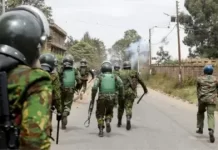




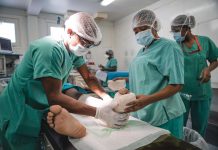


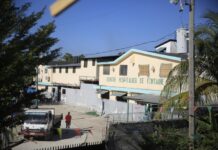















![Phyllisia Ross – KONSA [Official Music Video]](https://haitiville.com/wp-content/uploads/2014/08/phyliisia.jpg)
